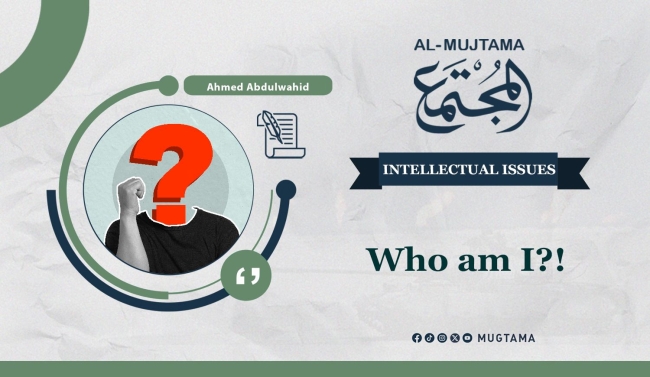The question of identity is complex and can often haunt a person, amid the difficulty of answering it, in the midst of challenges imposed by tremendous technological advancement and the technical evolution in means of communication and interaction. This has made the world a small village, and consequently, humanity has become prey to everything new and strange.
But it is wise to simplify matters for young children and teenagers of both sexes, and to provide answers to big questions in a smooth and concise manner, so that our children do not fall victim to alienation, globalization, intellectual and cultural invasion, and civilizational estrangement, without a savior.
To begin with, the compass must be clearly and visibly established for our children, especially regarding their Islamic identity, and being a Muslim who professes the testimony of faith, believes in God, His angels, His messengers, and the Day of Judgment, and that the religion with God is Islam. They should understand that there are limits set by God, and commands and prohibitions that they must adhere to, as well as a Sharia within the framework of the Quran and Sunnah, which serves as their guide and path in this worldly life
Some may think that these are self-evident matters, but the waves of Westernization, atheism, and deviation that have hit new generations and dominated the media and communication require us to reaffirm those constants, revive those roots, and illuminate the path to bring those generations from darkness to light, guided and with clear evidence, without any doubt or suspicion, and where their beliefs are not shaken by hypocrites or atheists.
The second question of identity relates to the Arab being, in terms of language, tongue, history, and geography, and the connection to the Arab nation, with its past, present, and future, taking pride in that, in word and deed, being certain of the dignity of its nation when it clings to its language and religion. It established a civilization that led nations in previous centuries and achieved cultural accomplishments recognized by history.
Some of the new generations may feel shame and embarrassment from their affiliation with an Arab country that ranks low in indicators of knowledge, progress, and development. They might feel embarrassed by their Arabic language, picking up several words in English or French, and continuously chatter in those languages, believing that this reflects sophistication and advancement. This results in a neglect of their own culture and Arabic language, leading to a sense of inferiority in front of speakers of other languages, and retreating before cultures that do not compare to what our culture embodies in terms of values, principles, heritage, and history.
The third question of identity is unconventional and is the result of new changes that have imposed themselves on the world of adolescents and youth, who may be accused of rigidity and backwardness by their peers, especially when it comes to traditional and classical lifestyles versus "modern" ones. This question carries within it social and material pressures related to clothing style, hairstyle, the type of phone one owns, shopping habits, and even food and drink choices. In a consumption-driven world that follows trends and global brands in a blatant materialistic manner, these issues are particularly pressing.
There may be other questions related to identity that touch on different aspects of the lives of teenagers and young adults, such as the European team they support in football, the legendary player whose jersey they love to wear, the American star whose movies they adore, the pop band whose music and songs they are addicted to, the wrestler whose moves they imitate, the famous YouTuber whose channel they follow on YouTube, and the TikToker whose views and visits they are captivated by, among others. These questions have emerged from new perspectives and dimensions related to youth identity, which is indeed lost in the world of fashion.
A new identity is manifesting before our eyes, which I might assert has transcended the triad of religion, language, and history, imposing other components that touch upon belief, custom, and habit, alongside ethics and values. This includes aspects of education, marriage, friendships, and other forms of modern social life in the twenty-first century, which have reshaped and crafted new and strange identities, marked by a Western touch and a distorted flavor.
With the rapid development of platforms and means, the increasing diversity of ideas, the intense competition between ideologies, the cross-fertilization of cultures, and the multiplicity of purposes and goals, it has become a pressing obligation to study these identities, explore their characteristics and essence, delve into their roots and principles, and investigate what they contribute and what they lack. It is also important to unveil the concepts they promote, the visions they present, and to determine whether they are a constructive component and a qualitative addition or a factor of destruction and dependency in a new guise.
We may need to establish clubs for knowledge and cultural exchange, or centers for identity formation, to help new generations find themselves, explore their identities, engage in dialogue with others, and connect with their roots. This is not merely about an eternal relationship with parents and grandparents, but about launching from those roots into broader horizons that adapt to the changes of reality in this digital world. This should be done within the framework of an open and disciplined engagement with what others have offered and their achievements on all fronts, without being awed by them, belittling them, or adopting a sense of superiority over them, but rather merging all that is useful into a cohesive and robust identity that fosters creativity.


